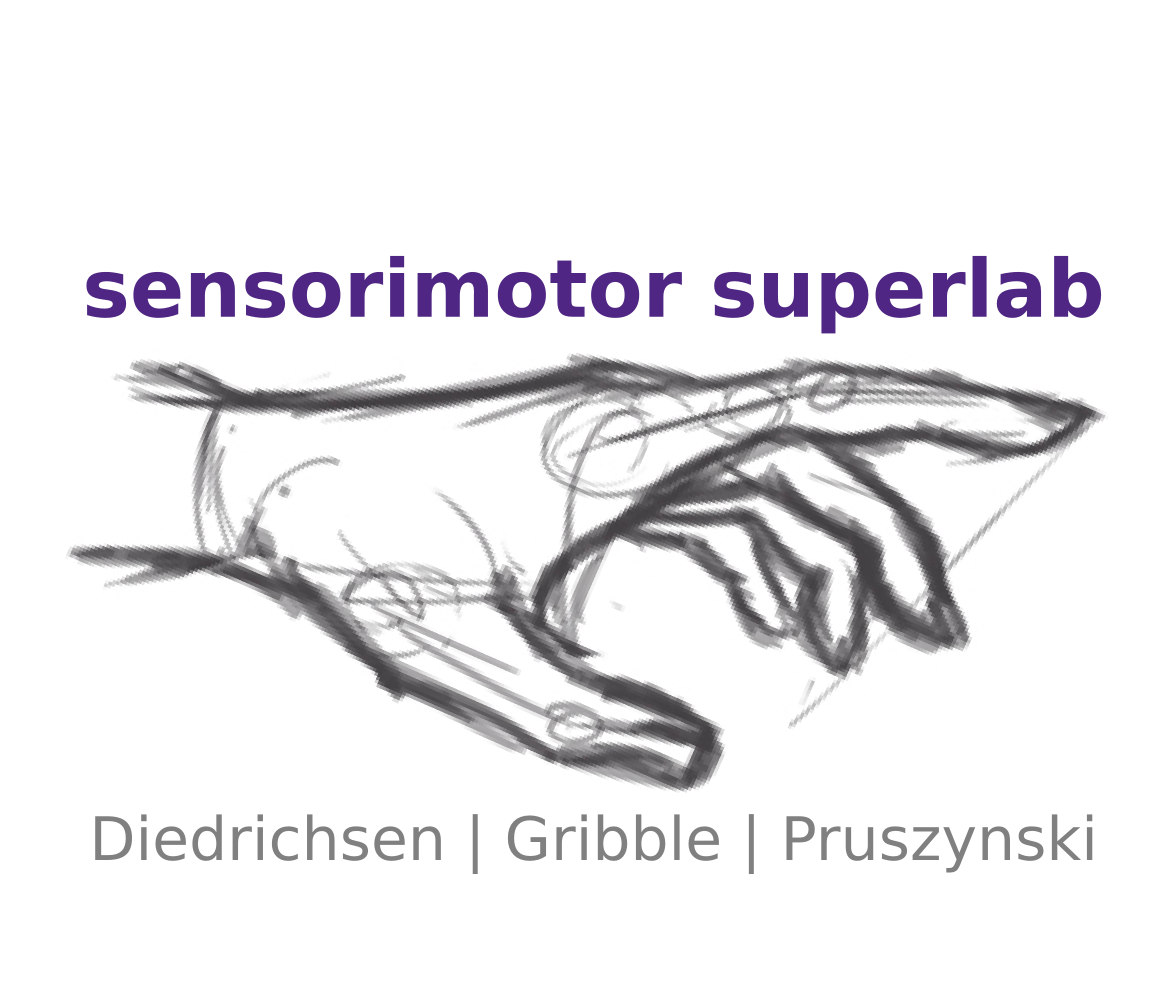Reading List 44
Here are the articles that we are reading this week.
Enjoy!
—Paul, Andrew & Jörn
1
Skin-integrated wireless haptic interfaces for virtual and augmented reality
Yu, X., Xie, Z., Yu, Y., Lee, J., Vazquez-Guardado, A., Luan, H., Ruban, J., Ning, X., Akhtar, A., Li, D., et al.
Nature 575, 473–479 (2019)
https://dx.doi.org/10.1038/s41586-019-1687-0
2
Layer 5 Circuits in V1 Differentially Control Visuomotor Behavior
Tang, L., and Higley, M.J.
Neuron (2019)
https://www.cell.com/article/S0896627319308876/abstract
Also check out the tweeprint.
3
Excitatory and Inhibitory Subnetworks Are Equally Selective during Decision-Making and Emerge Simultaneously during Learning
Najafi, F., Elsayed, G.F., Cao, R., Pnevmatikakis, E., Latham, P.E., Cunningham, J.P., and Churchland, A.K.
Neuron (2019)
https://www.cell.com/article/S0896627319308487/abstract
Also check out the tweeprint.
4
How different effectors and action effects modulate the formation of separate motor memories
Schween, R., Langsdorf, L., Taylor, J.A., and Hegele, M.
Sci. Rep. 9, 17040 (2019)
https://dx.doi.org/10.1038/s41598-019-53543-1
5
Experts, but not novices, exhibit StartReact indicating experts use the reticulospinal system more than novices
Bartels, B.M., Quezada, M.J., Ravichandran, V.J., and Honeycutt, C.F.
bioRxiv, 841791 (2019)
https://www.biorxiv.org/content/10.1101/841791v1
6
Sensorimotor integration in the whisker somatosensory brain stem trigeminal loop
Tsur, O., Khrapunsky, Y., and Azouz, R.
J. Neurophysiol. 122, 2061–2075 (2019)
https://dx.doi.org/10.1152/jn.00116.2019
7
Sensory cortical control of movement
Karadimas, S.K., Satkunendrarajah, K., Laliberte, A.M., Ringuette, D., Weisspapir, I., Li, L., Gosgnach, S., and Fehlings, M.G.
Nat. Neurosci. (2019)
https://doi.org/10.1038/s41593-019-0536-7
8
Remapping in cerebral and cerebellar cortices is not restricted by somatotopy
Hahamy, A., and Makin, T.R.
J. Neurosci. (2019)
https://dx.doi.org/10.1523/JNEUROSCI.2599-18.2019
9
Relationship between spiking activity and simultaneously recorded fluorescence signals in transgenic mice expressing GCaMP6
Huang, L., Knoblich, U., Ledochowitsch, P., Lecoq, J., Clay Reid, R., de Vries, S.E.J., Buice, M.A., Murphy, G.J., Waters, J., Koch, C., et al.
bioRxiv, 788802 (2019)
https://www.biorxiv.org/content/10.1101/788802v1
Two-photon calcium imaging is seeing a great uptake in popularity as a way to measure large-scale neural activity in the brain. However, much like fMRI, the relationship between the measured signal and the signal of interest (neural spiking) is not known. Here, Huang et al. present heroic work where they recorded spiking and calcium florescence from 91 neurons in vivo from layer 2/3 primary visual cortex in transgenic mice. Along with a number of separate analyses, they demonstrate that calcium imaging has higher spike-detection rates at high-resolution imaging, but detection decays substantially when imaging at spatial resolutions that are more commonly employed (10-15% correct detection). Most exciting is that this data is freely available at https://portal.brain-map.org/explore/circuits/oephys. —SA
10
Variability in the analysis of a single neuroimaging dataset by many teams
Botvinik-Nezer, R., Holzmeister, F., Camerer, C.F., Dreber, A., Huber, J., Johannesson, M., Kirchler, M., Iwanir, R., Mumford, J.A., Adcock, A., et al.
bioRxiv, 843193 (2019)
https://www.biorxiv.org/content/10.1101/843193v1
When analyzing fMRI data, we are faced with many choices: which software package to choose, how to define regions of interest, whether or not we should apply spatial smoothing etc. In this paper, 70 independent teams analyzed the same dataset testing predefined hypotheses, with their own analysis pipelines. Botvinik-Nezer and colleagues show that variation in scientific conclusions across teams is sizeable, and point out analytic choices related to biggest variability in results. —EB
11
Somatic and Dendritic Encoding of Spatial Variables in Retrosplenial Cortex Differs during 2D Navigation
Voigts, J., and Harnett, M.T.
Neuron (2019)
https://www.cell.com/article/S089662731930889X/abstract
12
Continual Learning in a Multi-Layer Network of an Electric Fish
Muller, S.Z., Zadina, A.N., Abbott, L.F., and Sawtell, N.B.
Cell (2019)
https://www.cell.com/article/S0092867419311705/abstract
13
Inception loops discover what excites neurons most using deep predictive models
Walker, E.Y., Sinz, F.H., Cobos, E., Muhammad, T., Froudarakis, E., Fahey, P.G., Ecker, A.S., Reimer, J., Pitkow, X., and Tolias, A.S.
Nat. Neurosci., 1–6 (2019)
https://dx.doi.org/10.1038/s41593-019-0517-x
Superlab publications
Motor learning and transfer: from feedback to feedforward control
Maeda, R.S., Gribble, P.L., and Andrew Pruszynski, J.
bioRxiv, 845933 (2019)
https://www.biorxiv.org/content/10.1101/845933v1
New preprint with @andpru and @paulgribble using @KINARMLab to go from feedback to feedforward control. Check out the tweeprint. —RM
Influence of kinesthetic motor imagery and effector specificity on the long-latency stretch response
Forgaard, C.J., Franks, I.M., Maslovat, D., and Chua, R.
J. Neurophysiol. 122, 2187–2200 (2019)
https://dx.doi.org/10.1152/jn.00159.2019
In this final study of my PhD thesis, I used motor imagery and contralateral responses to test the relationship between the overt execution of a voluntary response in stretched muscle and instruction-dependent long-latency reflex (LLR) facilitation. A high proportion of overt response “leaks” were found where the mentally simulated or mirrored response appeared in stretched muscle. The first half of the LLR was categorically sensitive to the appearance of leaks, whereas the latter half displayed characteristics closely resembling activity in the ensuing voluntary period. Critically, the LLR on non-leaked trials was indistinguishable from a passive control condition. These findings suggest that instruction-dependent facilitation of the LLR does require the overt execution of a motor response during the voluntary epoch of stretched muscle. —CF
Contributors
- Spencer Arbuckle (@saarbuckle)
- Eva Berlot (@EvaBerlot)
- Rodrigo Maeda (@rodrigo_maeda)
- Chris Forgaard
Archive
You can look at an archive of our previous posts here: https://superlab.ca
Disclaimer
Please keep in mind that the appearance of a paper on our reading list should not necessarily be considered an endorsement of the work unless of course we explicitly endorse it, for example in a blurb. As always, please read papers with a critical eye.
 Sensorimotor Superlab
Sensorimotor Superlab